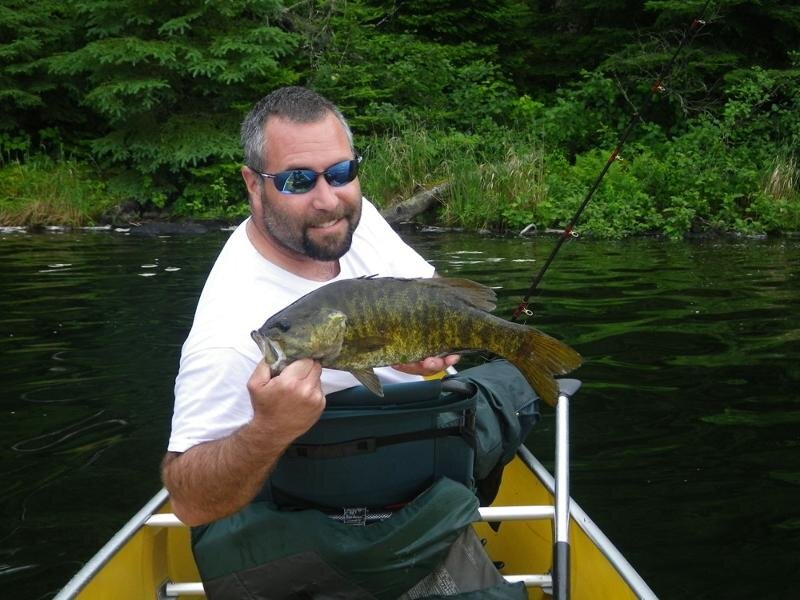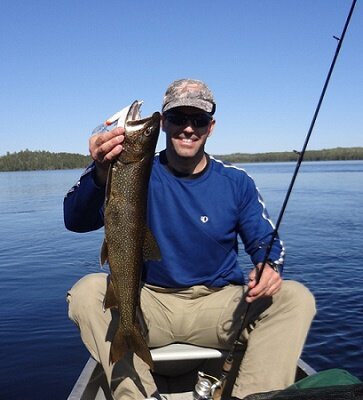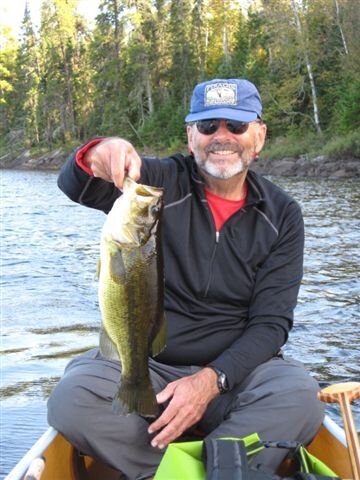
Meet The “Cast”
BWCA and Quetico Fish Species
Walleye- In some circles they are considered the best "eating" fish around. Walleyes average 12"-18" or 1-2½ lbs but have been caught in excess of 15 lbs! They can be caught with a variety of lures and bait including jigs, diving crankbaits and live bait (where permitted). Late May through early July may be the best time for walleye success, but they're catchable throughout the season.
Smallmouth Bass- Arguably the best Smallmouth Bass fishing in North America exists right here in the Canoe Country. Though catchable on many different types of bait and lures, perhaps the most exciting way to catch a Smallmouth is on a topwater lure. The Smallmouth come into the shallow water to spawn at the end of May or the beginning of June. Anglers can often see the fish they're casting to at this time of the year. This is also when many fly fishermen target Smallmouth Bass. Bass of 12"-15" are common in the Boundary Waters with many folks considering a 20" fish a true trophy. Considered by many to be, pound for pound, the strongest fighting fish in the Northwoods, Smallmouth fishing remains good through late summer and early fall.
Northern Pike- Often called the "Water Wolf", many anglers who have experience with Mr. Pike know that they'll hit just about anything. Size really doesn't matter to the Northern Pike but you almost can't cast a lure that's too big. Pike spawn right after ice out and can be found in shallow bays in the spring and early summer. Big pike frequently move into deep cooler water in mid-summer and can be caught trolling a deep diving lure behind the canoe. Flashy lures like Mepps spinners and Dardevle spoons are old standbys for pike fishing. It's not uncommon to catch pike in the 2-5 lb range, but pike in the Canoe Country can exceed 30 lbs!
Lake Trout- Contrary to popular belief, Lake Trout aren't always in 100 feet of deep water. While commonly roaming waters 50' or more, there are time of the season when these powerful fighting fish can be caught on spoons, spinners and crank baits, like pike. Cold water is the key for lake trout fishing as the Lake Trout prefers water temps that are below 60˚. In the spring, right after the ice goes out, the water is cold all over the lake which expands the Lake Trout's range right up to the surface and close to the shore. As the water cools in the fall, the same scenario occurs, making the Lake Trout easier to reach then, too. A late ice out in the spring or early cool temperatures in the fall can extend that shallower water time. In the middle of summer, it's not that unusual to catch a Lake Trout on an extra deep diving lure that's trolled behind the canoe or deep vertical jigging a spoon or heavy jig. Lake Trout also average in the 2-5 lb range but can attain size in excess of 30 lbs too!
The Rest of the Cast - Other species common to the Boundary waters include Largemouth Bass, Crappies, Bluegills, Perch and the occasional Brook Trout (a hand full of lakes inside the Boundary Waters are managed by the State of Minnesota). While these fish might not be as sought after as the other species, their presence in the Canoe Country means they get little, if any attention. This "lack of attention" can lead to some incredible fishing opportunities, as well.





